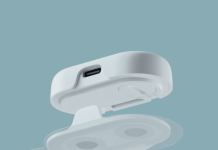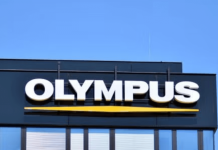Remedy Robotics announced that it debuted the N1 system, a remotely operable endovascular surgical robotic system.
The San Francisco-based company touts N1 as the world’s first remotely operable endovascular robot. It combines proprietary hardware and AI-enabled software to enable faster, safer and more effective innovation in cardiovascular conditions. Those include stroke, heart attack or vascular trauma, whether across the room or across the globe.
Dr. Vitor Mendes Pereira of St. Michael’s Hospital and the University of Toronto recently completed a series of first-in-human procedures. The procedures included fully remote operations conducted between two separate hospitals within the Unity Health Toronto network.
The company said the cases mark the world’s first entirely remotely operated endovascular interventions. They demonstrated N1’s ability to deliver life-saving treatments for cardiovascular emergencies.
“By successfully completing these remote procedures in humans, we’re not just introducing a breakthrough technology—we’re taking the real steps towards ensuring that every person around the world has access to the best possible endovascular care,” said Dr. David Bell, CEO and co-founder of Remedy Robotics. “This milestone is a testament to our team’s dedication and our commitment to partnering with leading clinicians and institutions, like Dr. Vitor Pereira and Unity Health Toronto. Together, we’re building a solution that will transform cardiovascular care globally.”
It also raised $35 million in funding to advance its remote robotic intervention technology, according to an Axios report.
With the unveiling of its N1 system, Remedy Robotics could challenge in the endovascular robotics space. The likes of Microbot Medical and Stereotaxis. Siemens Healthineers also had its Corindus endovascular robotics unit but scaled that business back a few years ago.
Remedy says endovascular intervention represents the gold standard for cardiovascular diseases. However, it remains limited to select specialist hospitals.
N1 includes an endovascular robot that integrates into any cath lab, while its AI-enabled software enables precise, safe control of multiple tools simultaneously. It features 360-degree catheters for safe navigation through the vasculature and built-in connectivity with image streaming.
The robot has latency management for seamless remote operation and an integrated contrast injector for managing the procedure. Remedy says it also supports audio-visual communication between the cath lab and remote operator. The system’s simple, portable operator console then enables easy deployment both within and outside hospital environments.
According to Remedy Robotics, it can now focus on expanded clinical trials and develop additional applications across a range of specialties.
“The Remedy N1 system represents the next generation of surgical robotics, using advanced AI and machine learning to enable clinicians to operate robotically with a degree of visibility, precision, and control that has never before been possible,” said Jake Sganga,, CTO and co-founder of Remedy Robotics. “The system is engineered for scalability, allowing for straightforward deployment at virtually any hospital and, for the first time, allowing clinicians to complete entire endovascular procedures remotely from start to finish. The N1 system will allow every hospital to provide safe and precise endovascular intervention for cardiovascular procedures, and will empower physicians to provide expert care wherever it’s needed.”





